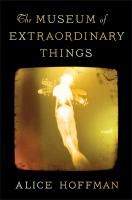Sita's Ramayana is a fantastic retelling of a classic Sanskrit epic. If you've never read any version of the Ramayana, this is a fine place to start. If you're already familiar with the tale, there are significant twists in this Bengali version, beginning with the fact that it's told from a woman's point of view.
The images are adapted from Moyna Chitrakar's wordless scroll paintings, with text by Samhita Arni.
The story opens with sorrowful Sita, eye makeup running down her cheeks, asking the forest to shelter her.
"Let me live here. The world of men has banished me." Then the narrative backs up 14 years, to the point where Prince Rama has been exiled from his kingdom, accompanied by his wife Sita, and his brother Lakshmana.
 |
Sita was abducted, rescued, and then doubted.
She returns to the forest sad and alone. |
Sita gets kidnapped by Ravana, a demon with ten heads, and Rama gets help from an army of animals to get her back from the island of Lanka. War means death and destruction, and Sita has empathy for both sides.
"The cries of the women of Lanka lamenting Kumbhakarna's fall filled my ears, even though he fought on the side of my enemy. I could not help but feel his death was tragic, for he had advised Ravana wisely, and gone, knowingly, to meet his death."
"their people had met death on the battlefield - for what? For one man's unlawful desire. Men had been killed, widowed, and children orphaned. It was such a high price to pay."
Rama is the human incarnation of Lord Vishnu. He excels at everything he does. He is essentially virtuous, obedient to his father and loyal to his wife. But he sometimes acts dishonourably (using treachery to kill), is obstinate (won't go back on a promise even when it no longer makes sense), and he also doubts his wife's fidelity. This makes him more interesting as a hero.
 |
| Rama (left), Sita (center) and Lakshmana (right) |
 |
Ravana, beloved of his family...
but not so much by others. |
In my previous encounters with Rama, he's had blue skin (like Vishnu) so I found it a bit disconcerting that Chitrakar uses a sort of greenish-brown for his colour. Meanwhile, some of the other characters are blue, notably Ravana and his family, even though Ravana is more typically green. Chitrakar portrays Hanuman - monkey god and son of the wind - as black (like the other monkeys) instead of his usual white. These differences made me pay more attention, so I liked them.
When Hanuman is sent on a Hercules-type mission to get a distant medicinal herb, he stuns the rest of his army upon return:
"You brought the entire hill?" says one monkey.
"Well, I couldn't find the plant you told me to find, and I was running out of time, so I brought the whole hill to you instead."
The irregular page layouts feature large panels that emphasize ornamental details in the paintings, as well as taking advantage of the angles and curves of Chitrakar's overall graphic design.
 |
The three panels across two pages (below) are repeated on the lower right of the spread above.
A combination of rectangular and round text boxes are used.
Note how the angled sides of the panels (top) characterize the movement of water. |
I found the huge eyes on Chitrakar's characters particularly striking.
 |
| Eye-catching use of blue, red and yellow. Check out the crazy eyes on the elephant! |
 |
| This is possibly the most bad-ass squirrel I've ever encountered. |
Ancient stories are repeated and retold because they continue to resonate. Like other classic tales from around the world - Greek, Roman and Norse mythology, Gilgamesh, Beowulf, King Arthur, European fairytales, etc. - the Ramayana has influenced authors of contemporary literature. Salman Rushdie's
Midnight's Children is just one example.
Pair
Sita's Ramayana with Sanjay Patel's hip and funky
Ramayana: Divine Loophole.




























